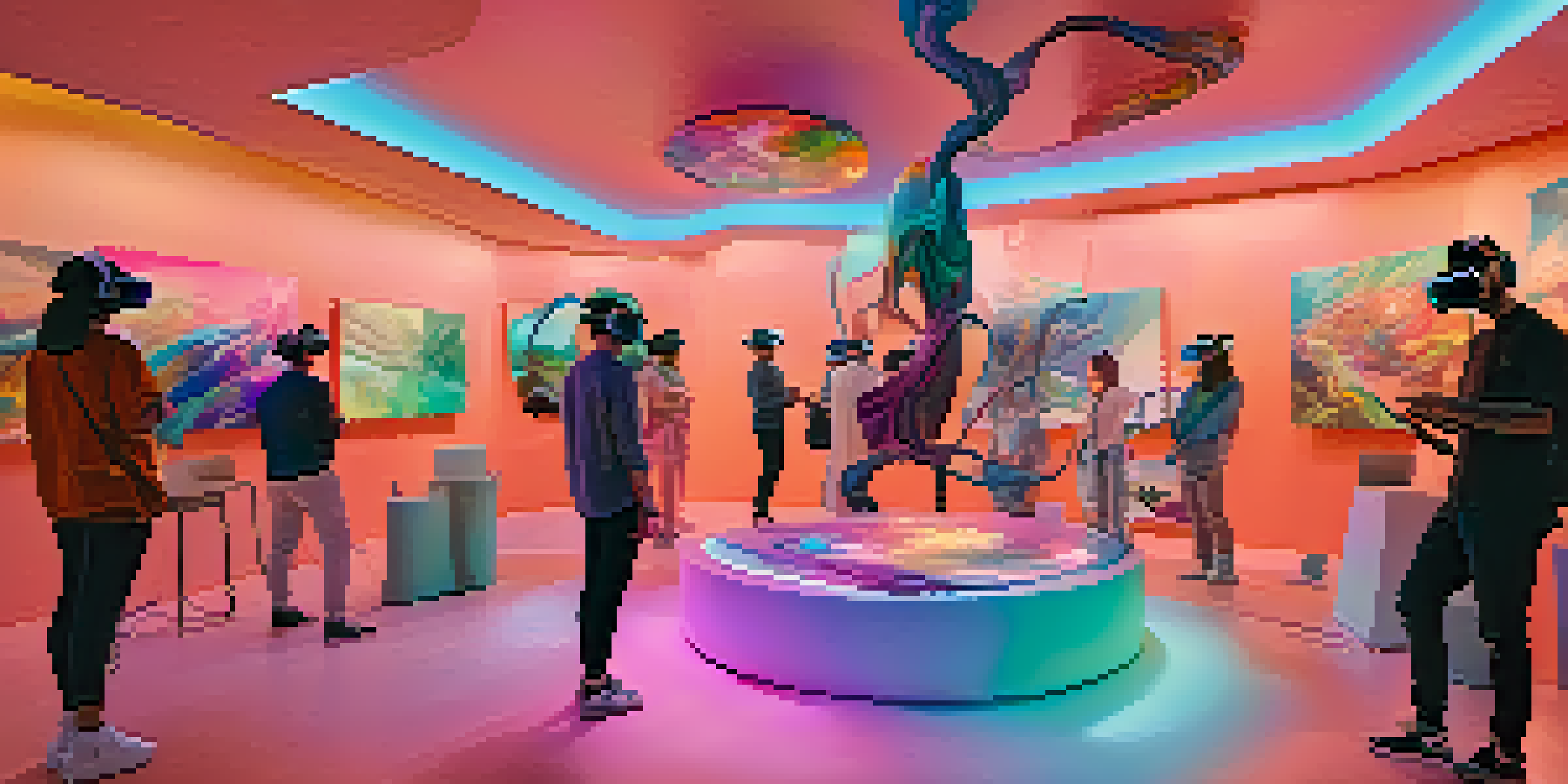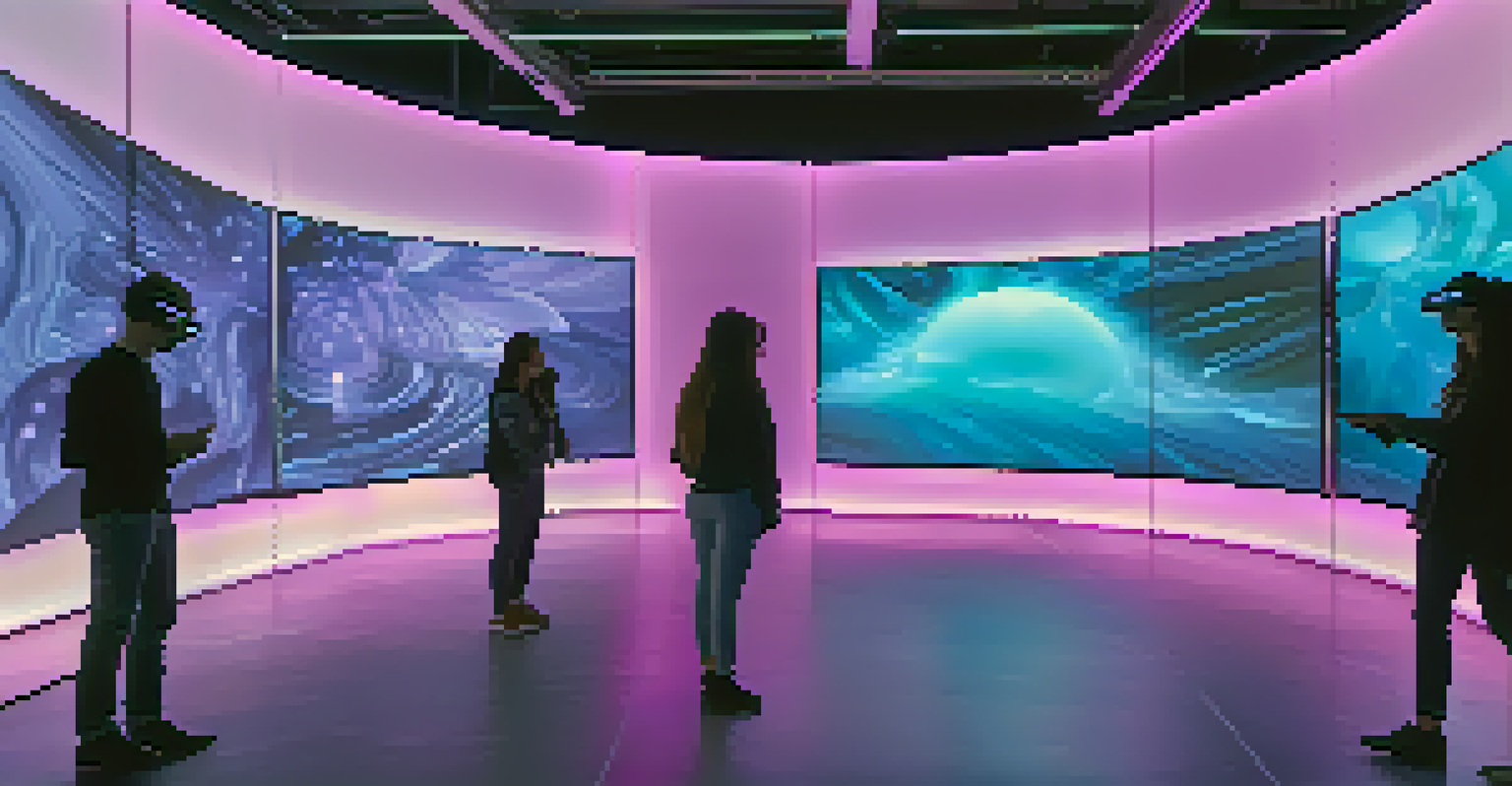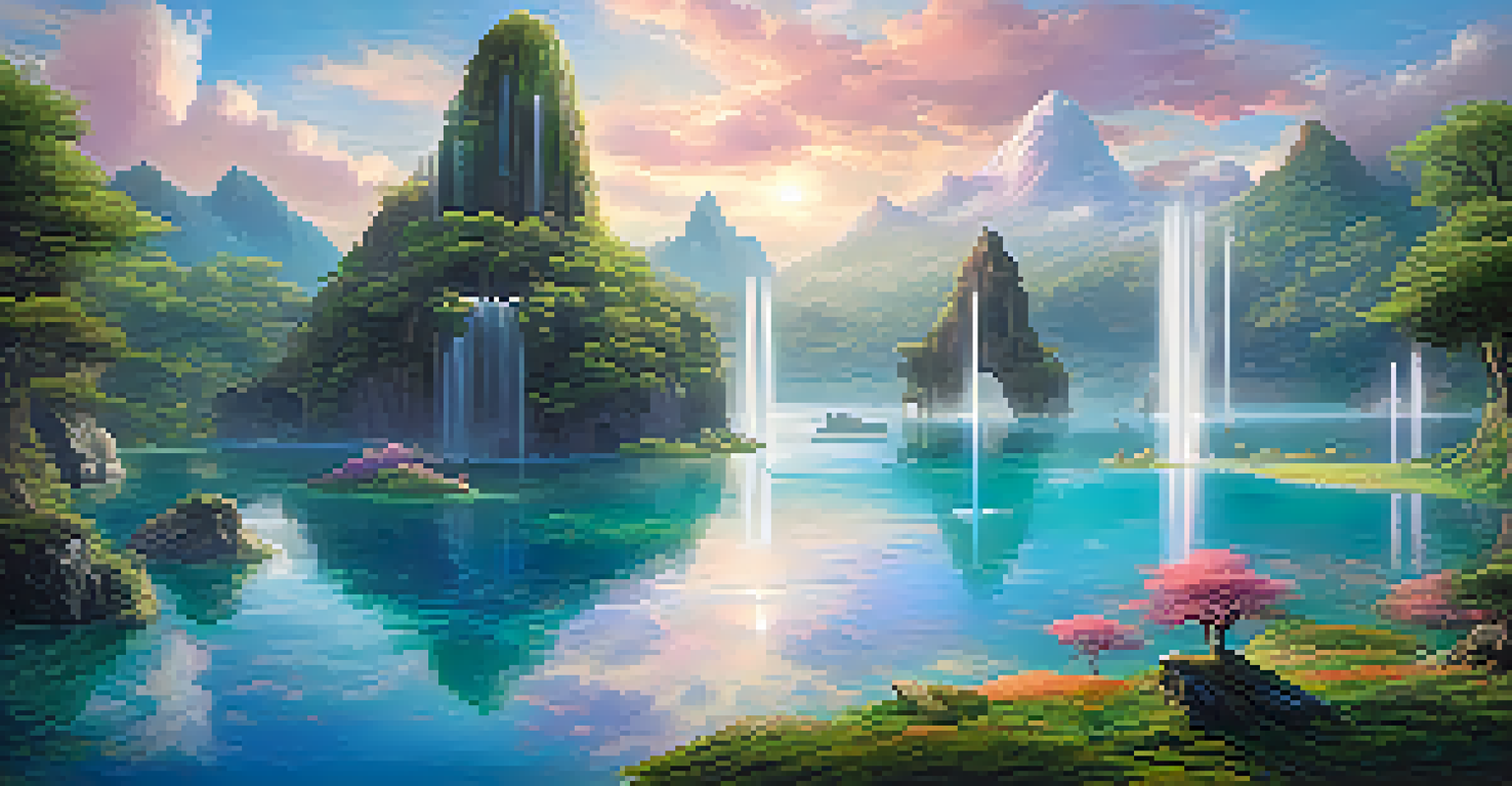Virtual Reality and the Democratization of Art Creation

The Rise of Virtual Reality in the Art World
In recent years, virtual reality (VR) has emerged as a groundbreaking medium in the art world. Artists are now using VR to create immersive experiences that transport viewers into completely new dimensions. This technology allows for an interactive relationship between the artwork and the audience, fundamentally changing how we perceive art.
Art is not what you see, but what you make others see.
For instance, VR art installations can engulf viewers in a 360-degree environment, allowing them to experience art in ways that traditional mediums simply can't provide. Imagine walking through a painting where colors and forms come alive and respond to your movements. This level of engagement can spark deeper emotional connections with the art.
As VR continues to evolve, it opens doors for artists to experiment and push boundaries. The incorporation of VR in art not only enhances creativity but also encourages collaboration among artists, technologists, and audiences, paving the way for a new era of artistic expression.
Democratizing Art Creation Through Accessibility
One of the most exciting aspects of VR is its potential to democratize art creation. Historically, access to art tools and training has been limited to those within certain socio-economic boundaries. However, with affordable VR platforms, more individuals can explore their creative potential without the need for expensive materials or extensive training.

Programs and applications designed for VR art-making are becoming increasingly user-friendly, enabling anyone to create stunning visual art. Think of it like a digital canvas where you can paint, sculpt, or even animate without the mess of traditional art supplies. This accessibility fosters a more inclusive environment where diverse voices and perspectives can flourish.
VR Transforms Art Experiences
Virtual reality creates immersive art experiences that engage viewers in interactive and emotional ways.
Moreover, online VR galleries allow artists from all over the globe to showcase their work, reaching audiences they may not have been able to connect with otherwise. This shift not only empowers creators but also enriches the art community as a whole, making it more vibrant and varied.
Enhancing Creativity with Immersive Experiences
VR technology isn’t just a tool for creating art; it also enhances the creative process itself. Immersive experiences in VR can inspire artists by providing them with a novel environment to develop their ideas. Imagine painting while floating in a surreal landscape or sculpting while surrounded by ethereal sounds and visuals.
The best way to predict the future is to create it.
These unique experiences can stimulate creativity in ways that traditional settings might not. Artists often find that the freedom of movement in a virtual space allows for spontaneous ideas to flow more naturally, leading to innovative outcomes. The combination of visual and auditory stimulation can unlock new levels of imagination.
Additionally, VR can serve as a platform for collaboration, where artists can work together in real-time, regardless of their physical location. This potential for joint creativity not only enhances individual projects but also fosters a sense of community among artists, bridging gaps between different cultures and styles.
Virtual Reality: Bridging the Gap Between Art and Technology
The intersection of art and technology is not a new concept, but VR takes it to a whole new level. By merging artistic expression with cutting-edge technology, artists are able to create pieces that are not only visually stunning but also interactive. This fusion allows for a form of storytelling that can engage viewers on multiple sensory levels.
For example, VR can seamlessly integrate audio, visuals, and even tactile feedback, providing a multi-dimensional experience that traditional forms of art cannot offer. This capability elevates the narrative aspect of art, allowing creators to craft experiences that resonate deeply with their audience.
Accessibility Broadens Art Creation
Affordable VR platforms democratize art creation, enabling more people to explore their creativity without traditional barriers.
As this blend of art and technology continues to evolve, it opens up exciting possibilities for future art movements. Artists who embrace these new tools are not just creating art; they are pioneering a new frontier that challenges our understanding of creativity and its role in society.
The Role of Community in Virtual Art Spaces
Community plays a pivotal role in the world of VR art creation. Virtual platforms allow artists and art enthusiasts to gather, share, and critique each other's work in a way that transcends geographical boundaries. This sense of community can be incredibly empowering for artists, especially those who may feel isolated in their creative journeys.
Through online forums, social media groups, and VR meetups, artists can find support, inspiration, and constructive feedback. This collaborative spirit helps foster growth and innovation, as artists are exposed to diverse perspectives and techniques. It’s like having a global art studio open 24/7, where creativity thrives.
Furthermore, community-driven events, such as virtual exhibitions and workshops, provide opportunities for artists to showcase their work and connect with audiences. This not only amplifies their reach but also contributes to the collective appreciation of art in the digital age, reinforcing the idea that art is meant to be shared and experienced together.
Challenges and Considerations in VR Art Creation
While the potential of VR in art creation is immense, it does come with its own set of challenges. One of the primary concerns is the accessibility of the technology itself. Although VR equipment has become more affordable, there still exists a digital divide that limits some individuals' access to these tools.
Additionally, as artists dive into this new medium, they may encounter a steep learning curve with the software and hardware involved. This transition from traditional methods to VR can be daunting, and not all artists may feel equipped to make the switch. However, many resources and tutorials have emerged to help bridge this gap.
Community Enhances Virtual Art
Virtual platforms foster a sense of community among artists, allowing for collaboration and shared growth in creativity.
Lastly, there’s the question of permanence and the preservation of VR art. Unlike traditional art forms that can be physically stored, digital art faces challenges in terms of archiving and maintaining its integrity over time. As the world of VR art continues to grow, finding solutions to these challenges will be essential to ensure its lasting impact.
The Future of Art in a Virtual Reality Landscape
As we look to the future, it’s clear that virtual reality will continue to shape the landscape of art creation. The potential for new artistic expressions is limitless, with each technological advancement offering artists fresh avenues to explore. We may see more artists experimenting with hybrid forms of art that blend VR with traditional techniques.
Moreover, educational institutions are beginning to recognize the value of VR in art programs. By incorporating VR training into their curricula, they are preparing the next generation of artists to thrive in this digital age. This integration could lead to a more robust and diverse art community that embraces both the old and the new.

Ultimately, the fusion of art and virtual reality is not just a passing trend; it’s a paradigm shift that encourages creativity, inclusivity, and collaboration. As artists continue to harness the power of VR, we can expect to witness an exhilarating evolution in the art world that invites everyone to participate and express themselves creatively.